Which Uniform Should I Buy for My First Martial Arts Class?
March 20th, 2025
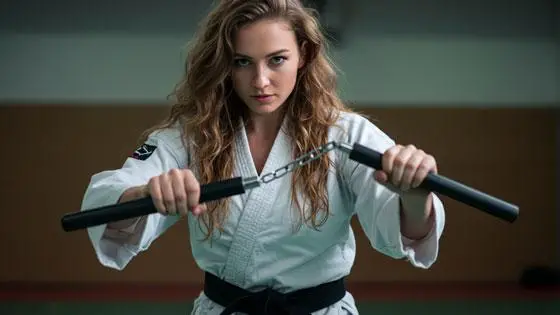
So, you've decided to step onto the mats and begin your martial arts journey - congratulations! Whether it's the sharp strikes of karate, the dynamic kicks of taekwondo, or the fluid movements of kung fu calling your name, you're about to embark on a path rich with discipline, tradition, and self-discovery. But before you throw your first punch or kick, there's one critical decision to make: Which uniform should I buy for my first martial arts class?
Here's the golden rule right up front: Ask your instructor. Every martial arts school, or dojo, has its own traditions, requirements, and preferences when it comes to uniforms. Your sensei, sifu, or coach might mandate a specific style, color, or weight of uniform - or even require you to purchase one directly from them. Ignoring this step could leave you with a gi or dobok that's out of place in your class. That said, understanding the options available can help you make an informed choice and appreciate the history behind what you'll wear. In this comprehensive guide, we'll explore the world of martial arts uniforms, diving deep into their origins, purposes, and modern variations-perfect for beginners shopping at KarateMart.com.
Why Do Martial Arts Use Uniforms?
Martial arts uniforms - whether called a gi, dobok, or keikogi - are more than just clothing. They're symbols of tradition, equality, and respect. Historically, these garments evolved from practical attire suited to combat training, reflecting the culture and philosophy of each martial art. Today, they unify students under a shared identity, stripping away external differences like wealth or status. They're also designed for functionality, allowing freedom of movement while withstanding the rigors of practice.
But why do uniforms differ so much between styles? To answer that, let's journey through the history of some of the most popular martial arts and their iconic attire, starting with the karate gi.
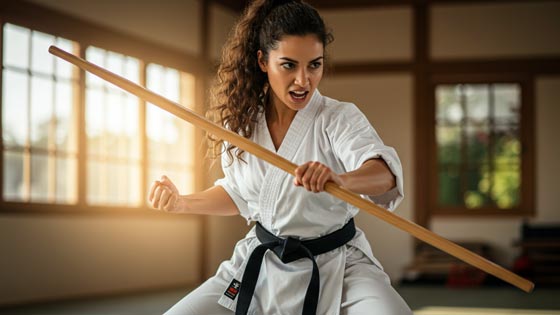
The History of the Karate Gi
Karate, born on the island of Okinawa, blends indigenous fighting techniques with influences from Chinese martial arts. In its early days during the Ryukyu Kingdom (14th-19th centuries), practitioners trained in everyday clothing - loose, practical garments suited to the humid climate. It wasn't until the early 20th century, when karate master Gichin Funakoshi introduced the art to mainland Japan, that the modern karate gi took shape.
Funakoshi, seeking to formalize karate and align it with Japanese budo (martial way), adopted a uniform inspired by the judogi, created by judo founder Jigoro Kano. This cotton outfit - consisting of a jacket, pants, and belt - was lightweight yet durable, reflecting karate's emphasis on speed and precision. The white color symbolized purity and humility, values central to Funakoshi's philosophy. Over time, the karate gi became standardized, with variations in weight to suit different training needs.
Types of Karate Gis
Today, karate uniforms come in several weights, each designed for specific purposes. At KarateMart.com, you'll find options ranging from lightweight to super heavyweight - here's what each offers:
Why the Karate Gi Matters
The gi's loose fit allows for high kicks and rapid strikes, while its cotton weave wicks sweat and endures tugs during partner drills. The belt (obi) signifies rank, tying the uniform to karate's hierarchical structure. Whether you choose lightweight or heavyweight, your gi connects you to centuries of Okinawan and Japanese martial heritage.
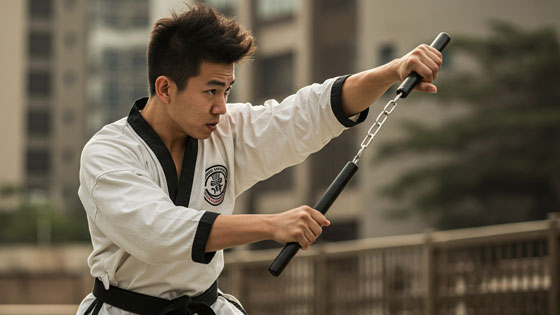
The History of the Taekwondo Uniform
Taekwondo, a Korean martial art, emerged in the mid-20th century, blending ancient Korean fighting styles like taekkyeon with Japanese karate influences. Post-Korean War, General Choi Hong Hi unified various kwans (schools) under the taekwondo banner, introducing the dobok - a V-neck uniform distinct from the karate gi's crossover design. The V-neck reflected Korean clothing traditions, such as the hanbok, while the white color symbolized purity and peace - apt for an art promoted as a tool for national identity.
Unlike karate's heavier options, taekwondo uniforms prioritize agility for the art's signature high, spinning kicks. Over time, colored doboks (e.g., black for masters) and lightweight fabrics emerged, especially with taekwondo's rise as an Olympic sport.
Types of Taekwondo Uniforms
Why the Dobok Matters
The dobok's lightweight construction supports taekwondo's explosive techniques, while the V-neck nods to Korean heritage. Its belt system mirrors karate's, marking progress from white to black. For your first class, a lightweight dobok is a safe bet - unless your instructor specifies otherwise.
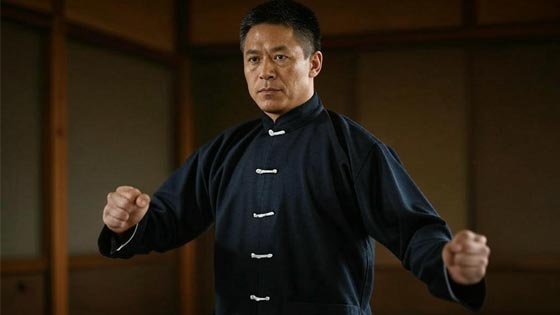
The History of the Kung Fu Uniform
Kung fu, an umbrella term for Chinese martial arts, boasts a history stretching back over 1,500 years. From the Shaolin Temple's monk warriors to the Qing Dynasty's rebels, practitioners wore loose, flowing garments suited to China's diverse climates and fighting styles. The modern kung fu uniform - a long-sleeved top with "frog" buttons and matching pants - crystallized in the 20th century, influenced by theatrical depictions and wushu standardization.
The black uniform with white frog buttons, now iconic, emerged as a practical choice: dark fabric hid dirt during outdoor training, while the buttons allowed quick fastening without zippers or hooks. Colors like red or gold later appeared, often for demonstrations or cultural significance.
Types of Kung Fu Uniforms:
Why the Kung Fu Uniform Matters
The uniform's wide sleeves and pants enable fluid forms like tai chi or wing chun's trapping techniques. Its aesthetic ties practitioners to kung fu's cinematic legacy and philosophical roots. Check with your sifu, as some schools favor specific colors or styles.
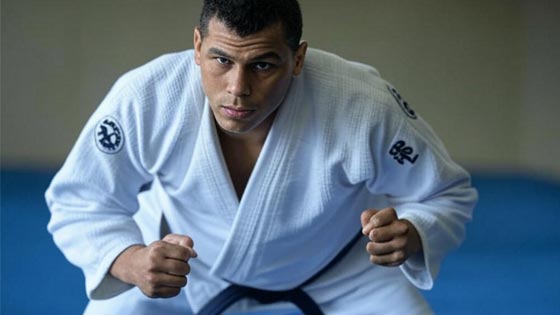
The History of the Judo Uniform
Judo, founded by Jigoro Kano in 1882, revolutionized Japanese martial arts by emphasizing throws and grappling over strikes. Kano adapted the kimono into the judogi - a sturdy, double-layered uniform designed to endure tugs and falls. Early judo gi were white, reflecting purity, but blue versions emerged in the 20th century for competition clarity.
The judogi's thick weave and reinforced stitching set it apart from lighter karate gis, aligning with judo's focus on close-contact techniques. Its evolution mirrors judo's growth into a global sport.
Types of Judo Uniforms:
Why the Judo Gi Matters
The judogi's thickness provides grip points for throws like seoi nage, while its loose fit allows mobility. White remains traditional, but blue is common in tournaments. Your dojo will dictate the color and weave - ask first!
The History of the Jiu-Jitsu Uniform
Brazilian Jiu-Jitsu (BJJ), derived from judo by the Gracie family in the early 20th century, adapted the judogi into the BJJ gi. While judo focused on throws, BJJ emphasized ground fighting, requiring a tighter, more durable uniform. Early BJJ gis were white, but colors like black and navy gained popularity as the art spread globally.
The BJJ gi's reinforced seams and snug fit prevent opponents from grabbing excess fabric, reflecting the art's tactical evolution. Today, it's a cornerstone of BJJ culture, from academies to the UFC.
Types of Jiu-Jitsu Uniforms
Why the BJJ Gi Matters
The gi's snug design aids techniques like chokeholds, while its durability withstands submissions. Colors often denote rank or school preference - confirm with your professor before buying.
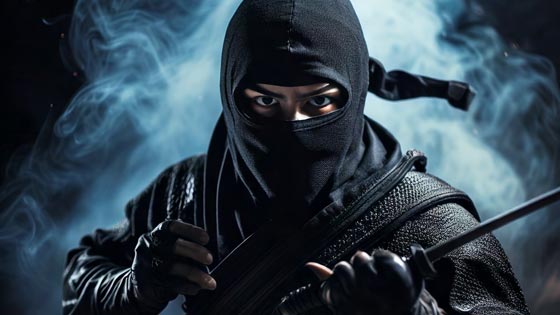
The History of the Ninja Uniform
Ninjutsu, the art of Japan's feudal spies, dates to the 12th century. Contrary to Hollywood's all-black stereotype, historical ninja wore dark blue or gray-colors blending into twilight shadows. Their shinobi shozoku included a hooded jacket, pants, and mask, designed for concealment and agility during espionage or sabotage.
Modern ninja uniforms, popularized by 20th-century practitioners like Masaaki Hatsumi, retain this sleek, dark aesthetic, though functionality trumps myth. They're less about combat and more about tradition today.
Types of Ninja Uniforms
Why the Ninja Uniform Matters
Its dark hue and flexible fit honor ninjutsu's secretive roots, though modern training rarely mimics historical missions. Your sensei may allow variations - check first.
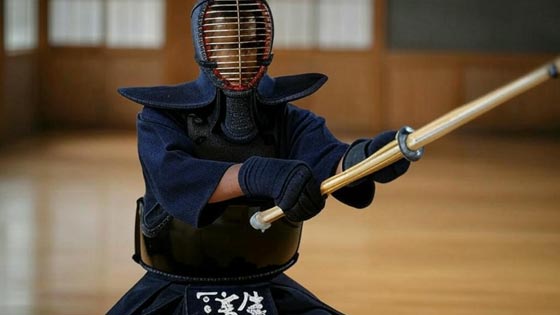
The History of the Kendo Uniform
Kendo, Japan's "way of the sword," evolved from samurai kenjutsu in the late 19th century. Its uniform - a keikogi (jacket) and hakama (pleated pants)-mirrors Edo-period warrior attire. The keikogi's short sleeves aided swordplay, while the hakama's wide legs hid footwork, a tactical advantage.
Standardized in the 20th century, kendo uniforms remain navy or white, reflecting bushido's disciplined spirit. Armor (bogu) complements the outfit, but the base uniform is key to practice.
Types of Kendo Uniforms
Why the Kendo Uniform Matters
The uniform's design supports kendo's precise strikes and stances, linking practitioners to Japan's sword-wielding past. Your dojo will specify color - navy is most common.
Martial Arts Belts and Sashes: Symbols of Progress
The History of Belts and Sashes
The concept of colored belts as a marker of rank in martial arts owes its origins to Jigoro Kano, the founder of judo, in the late 19th century. Before Kano's innovation, martial arts practitioners in Japan and elsewhere had no formal system to denote skill level - progress was often an unspoken understanding between master and student. Kano, inspired by the structured education systems of his time, introduced the kyu-dan ranking system, pairing it with a simple yet profound visual cue: the belt. Beginners started with a white belt, symbolizing a blank slate, and advanced to black, representing mastery. Intermediate colors like yellow, green, and blue were later added to provide milestones along the journey.
This belt system spread from judo to karate when Gichin Funakoshi adopted it in the early 20th century, cementing its place in martial arts culture. Taekwondo followed suit, adding its own variations, while Brazilian Jiu-Jitsu refined the system with fewer colors but stricter criteria for progression. In contrast, Chinese martial arts like kung fu historically favored sashes over belts, reflecting their distinct cultural roots. Sashes, often broader and more decorative, allowed for greater customization - colors, embroidery, and even knots could signify rank or style.
Today, belts and sashes are more than rank indicators; they're badges of perseverance, tying modern practitioners to traditions centuries old. But why do they differ across martial arts, and what should you expect for your first class?
Types of Martial Arts Belts and Sashes
Why Belts and Sashes Matter
Belts and sashes tie your uniform together - literally and figuratively. They signal your commitment, connect you to your art's lineage, and motivate you to push forward. For your first class, a white belt or sash is almost always the default, but confirm with your instructor - some schools provide them, while others expect you to bring your own.
Choosing the Right Uniform: A Beginner's Guide
What Should You Consider?
With so many martial arts uniforms to choose from - karate gis, taekwondo doboks, kung fu suits, judogis, BJJ gis, ninja shozoku, and kendo hakama - how do you decide? Here's a checklist to guide your purchase from KarateMart.com:
Common Questions from Beginners
The Cultural Significance of Martial Arts Uniforms
Beyond practicality, martial arts uniforms carry deep cultural weight. The karate gi's white hue echoes Zen simplicity, while the judogi's reinforced weave recalls samurai resilience. The kung fu uniform's frog buttons nod to ancient Chinese craftsmanship, and the ninja's dark shroud evokes feudal subterfuge. Even the belt or sash, humble as it seems, ties you to a global community of warriors past and present.
Wearing these uniforms isn't just about dressing for class - it's about stepping into a legacy. They remind you that every kick, throw, or form you practice is part of a tradition honed over centuries, from Okinawa's dojos to Brazil's mats.
Where to Buy Your First Martial Arts Uniform
Ready to gear up? At KarateMart.com, we've got you covered with a full range of martial arts uniforms - karate gis in every weight, V-neck taekwondo doboks, sleek kung fu suits, durable judo gis, competition-ready BJJ gis, stealthy ninja uniforms, and traditional kendo sets. Pair them with the right belt or sash, and you're set to start your journey.
Not sure what to pick? Our customer service team can help you find the perfect fit, whether you're a beginner or a seasoned martial artist. Plus, with fast shipping and competitive prices, you'll be ready for your first class in no time.
Conclusion: Step Onto the Mats with Confidence
So, which uniform should you buy for your first martial arts class? The answer starts with your instructor - they'll point you to the right style, weight, and color for your school. From there, explore the rich history behind your choice. Will it be the crisp karate gi of Okinawa, the airy dobok of Korea, or the flowing kung fu suit of China? Maybe the rugged judogi, the tactical BJJ gi, the shadowy ninja uniform, or the samurai-inspired kendo hakama calls to you.
Each uniform tells a story - of warriors, monks, and masters who shaped these arts over centuries. At KarateMart.com, we're proud to outfit you for that story's next chapter. Ask your sensei, pick your gear, and step onto the mats ready to learn, grow, and honor the traditions you'll wear.
Why Do Martial Arts Use Uniforms?
Martial arts uniforms - whether called a gi, dobok, or keikogi - are more than just clothing. They're symbols of tradition, equality, and respect. Historically, these garments evolved from practical attire suited to combat training, reflecting the culture and philosophy of each martial art. Today, they unify students under a shared identity, stripping away external differences like wealth or status. They're also designed for functionality, allowing freedom of movement while withstanding the rigors of practice.
But why do uniforms differ so much between styles? To answer that, let's journey through the history of some of the most popular martial arts and their iconic attire, starting with the karate gi.

The History of the Karate Gi
Karate, born on the island of Okinawa, blends indigenous fighting techniques with influences from Chinese martial arts. In its early days during the Ryukyu Kingdom (14th-19th centuries), practitioners trained in everyday clothing - loose, practical garments suited to the humid climate. It wasn't until the early 20th century, when karate master Gichin Funakoshi introduced the art to mainland Japan, that the modern karate gi took shape.
Funakoshi, seeking to formalize karate and align it with Japanese budo (martial way), adopted a uniform inspired by the judogi, created by judo founder Jigoro Kano. This cotton outfit - consisting of a jacket, pants, and belt - was lightweight yet durable, reflecting karate's emphasis on speed and precision. The white color symbolized purity and humility, values central to Funakoshi's philosophy. Over time, the karate gi became standardized, with variations in weight to suit different training needs.
Types of Karate Gis
Today, karate uniforms come in several weights, each designed for specific purposes. At KarateMart.com, you'll find options ranging from lightweight to super heavyweight - here's what each offers:
- Lightweight Student Uniform (Lightweight Karate Gi):
Weighing around 6-8 oz, this gi is perfect for beginners or warm climates. Its thin fabric keeps you cool during kata (forms) or sparring, though it's less durable for intense grappling. Commonly available in white (for tradition) or black (for a sleek, modern look), it's an affordable entry point for new karateka.
Who's it for? First-timers asking, "What's the cheapest karate gi for my first class?" - Middleweight Student Uniform (Middleweight Karate Gi)
At 10-12 oz, this gi strikes a balance between comfort and durability. It's ideal for intermediate students practicing both kata and kumite (sparring). The thicker weave resists wear while still allowing flexibility.
Who's it for? Students wondering, "Which karate uniform lasts longer without breaking the bank?" - Super Middleweight Student Uniform (Super Middleweight Karate Gi)
Around 12-14 oz, this gi offers extra sturdiness for rigorous training. It's a favorite for advanced students refining techniques or preparing for tournaments.
Who's it for? Practitioners asking, "What's a versatile karate gi for serious training?" - Heavyweight Student Uniform (Heavyweight Karate Gi)
Weighing 14-16 oz, this gi is built for durability. Its crisp, loud "snap" during strikes makes it a staple for kata enthusiasts. However, it's less breathable, so it's best for cooler dojos.
Who's it for? Dedicated karateka asking, "Which gi looks and sounds impressive during kata?" - Super Heavyweight Student Uniform (Super Heavyweight Karate Gi)
At 16 oz or more, this is the tank of karate uniforms. Often unbleached for a traditional off-white hue, it's favored by masters and competitors. Its weight builds endurance but can feel restrictive for beginners.
Who's it for? Veterans asking, "What's the ultimate karate gi for tradition and toughness?"
Why the Karate Gi Matters
The gi's loose fit allows for high kicks and rapid strikes, while its cotton weave wicks sweat and endures tugs during partner drills. The belt (obi) signifies rank, tying the uniform to karate's hierarchical structure. Whether you choose lightweight or heavyweight, your gi connects you to centuries of Okinawan and Japanese martial heritage.

The History of the Taekwondo Uniform
Taekwondo, a Korean martial art, emerged in the mid-20th century, blending ancient Korean fighting styles like taekkyeon with Japanese karate influences. Post-Korean War, General Choi Hong Hi unified various kwans (schools) under the taekwondo banner, introducing the dobok - a V-neck uniform distinct from the karate gi's crossover design. The V-neck reflected Korean clothing traditions, such as the hanbok, while the white color symbolized purity and peace - apt for an art promoted as a tool for national identity.
Unlike karate's heavier options, taekwondo uniforms prioritize agility for the art's signature high, spinning kicks. Over time, colored doboks (e.g., black for masters) and lightweight fabrics emerged, especially with taekwondo's rise as an Olympic sport.
Types of Taekwondo Uniforms
- Lightweight Taekwondo Uniform
Weighing 5-7 oz, this dobok is airy and flexible, ideal for beginners or hot climates. Its V-neck pullover design is easy to wear, and the thin material suits fast-paced sparring.
Who's it for? Newbies asking, "What's a comfy taekwondo uniform for my first class?" - Super Middleweight Taekwondo Uniform
At 10-12 oz, this dobok offers durability without sacrificing mobility. It's perfect for intermediate students or competitors needing a uniform that withstands rigorous kicks and falls.
Who's it for? Practitioners wondering, "Which TKD uniform balances toughness and flexibility?"
Why the Dobok Matters
The dobok's lightweight construction supports taekwondo's explosive techniques, while the V-neck nods to Korean heritage. Its belt system mirrors karate's, marking progress from white to black. For your first class, a lightweight dobok is a safe bet - unless your instructor specifies otherwise.

The History of the Kung Fu Uniform
Kung fu, an umbrella term for Chinese martial arts, boasts a history stretching back over 1,500 years. From the Shaolin Temple's monk warriors to the Qing Dynasty's rebels, practitioners wore loose, flowing garments suited to China's diverse climates and fighting styles. The modern kung fu uniform - a long-sleeved top with "frog" buttons and matching pants - crystallized in the 20th century, influenced by theatrical depictions and wushu standardization.
The black uniform with white frog buttons, now iconic, emerged as a practical choice: dark fabric hid dirt during outdoor training, while the buttons allowed quick fastening without zippers or hooks. Colors like red or gold later appeared, often for demonstrations or cultural significance.
Types of Kung Fu Uniforms:
- Black Kung Fu Uniform with White Frog Buttons
This classic design offers a sleek, traditional look. The loose fit accommodates kung fu's circular motions and low stances, while cotton or silk blends keep you cool.
Who's it for? Beginners asking, "What's the most authentic kung fu uniform?" - Colored Kung Fu Uniforms
Available in red, blue, gold and other enticing colors, these add flair for performances or school-specific traditions. Frog buttons (often contrasting) remain a signature feature.
Who's it for? Students wondering, "Can I wear a colorful kung fu uniform to class?"
Why the Kung Fu Uniform Matters
The uniform's wide sleeves and pants enable fluid forms like tai chi or wing chun's trapping techniques. Its aesthetic ties practitioners to kung fu's cinematic legacy and philosophical roots. Check with your sifu, as some schools favor specific colors or styles.

The History of the Judo Uniform
Judo, founded by Jigoro Kano in 1882, revolutionized Japanese martial arts by emphasizing throws and grappling over strikes. Kano adapted the kimono into the judogi - a sturdy, double-layered uniform designed to endure tugs and falls. Early judo gi were white, reflecting purity, but blue versions emerged in the 20th century for competition clarity.
The judogi's thick weave and reinforced stitching set it apart from lighter karate gis, aligning with judo's focus on close-contact techniques. Its evolution mirrors judo's growth into a global sport.
Types of Judo Uniforms:
- Single Weave Judo Uniform
Lighter (around 12-14 oz), this gi suits beginners or warm dojos. Available in white or blue, it's flexible yet tough enough for randori (sparring).
Who's it for? New judoka asking, "What's an affordable judo uniform for my first class?" - Double Weave Judo Uniform
Heavier (16-20 oz), this gi is a beast - perfect for competitors or advanced students. Its durability shines during intense groundwork.
Who's it for? Serious players wondering, "Which judo gi can handle tough training?"
Why the Judo Gi Matters
The judogi's thickness provides grip points for throws like seoi nage, while its loose fit allows mobility. White remains traditional, but blue is common in tournaments. Your dojo will dictate the color and weave - ask first!
The History of the Jiu-Jitsu Uniform
Brazilian Jiu-Jitsu (BJJ), derived from judo by the Gracie family in the early 20th century, adapted the judogi into the BJJ gi. While judo focused on throws, BJJ emphasized ground fighting, requiring a tighter, more durable uniform. Early BJJ gis were white, but colors like black and navy gained popularity as the art spread globally.
The BJJ gi's reinforced seams and snug fit prevent opponents from grabbing excess fabric, reflecting the art's tactical evolution. Today, it's a cornerstone of BJJ culture, from academies to the UFC.
Types of Jiu-Jitsu Uniforms
- Standard BJJ Gi
Typically 10-14 oz (single or pearl weave), this gi balances comfort and durability. Available in white, black, or blue, it's ideal for beginners.
Who's it for? Newcomers asking, "What's a basic BJJ uniform for my first roll?" - Competition BJJ Gi
Often 12-16 oz with a tighter weave (gold or ripstop), this gi meets IBJJF standards. It's built for the mats' toughest battles.
Who's it for? Competitors wondering, "Which BJJ gi is tournament-ready?"
Why the BJJ Gi Matters
The gi's snug design aids techniques like chokeholds, while its durability withstands submissions. Colors often denote rank or school preference - confirm with your professor before buying.

The History of the Ninja Uniform
Ninjutsu, the art of Japan's feudal spies, dates to the 12th century. Contrary to Hollywood's all-black stereotype, historical ninja wore dark blue or gray-colors blending into twilight shadows. Their shinobi shozoku included a hooded jacket, pants, and mask, designed for concealment and agility during espionage or sabotage.
Modern ninja uniforms, popularized by 20th-century practitioners like Masaaki Hatsumi, retain this sleek, dark aesthetic, though functionality trumps myth. They're less about combat and more about tradition today.
Types of Ninja Uniforms
- Traditional Ninjutsu Uniform
A black or dark blue outfit with a hood and tabi boots. Lightweight and loose, it suits kata or stealth drills.
Who's it for? Enthusiasts asking, "What's a real ninja uniform like?"
Why the Ninja Uniform Matters
Its dark hue and flexible fit honor ninjutsu's secretive roots, though modern training rarely mimics historical missions. Your sensei may allow variations - check first.

The History of the Kendo Uniform
Kendo, Japan's "way of the sword," evolved from samurai kenjutsu in the late 19th century. Its uniform - a keikogi (jacket) and hakama (pleated pants)-mirrors Edo-period warrior attire. The keikogi's short sleeves aided swordplay, while the hakama's wide legs hid footwork, a tactical advantage.
Standardized in the 20th century, kendo uniforms remain navy or white, reflecting bushido's disciplined spirit. Armor (bogu) complements the outfit, but the base uniform is key to practice.
Types of Kendo Uniforms
- Kendo Keikogi and Hakama
Typically navy, this cotton set is lightweight yet durable. The hakama's seven pleats symbolize samurai virtues.
Who's it for? Beginners asking, "What do I wear for my first kendo class?"
Why the Kendo Uniform Matters
The uniform's design supports kendo's precise strikes and stances, linking practitioners to Japan's sword-wielding past. Your dojo will specify color - navy is most common.
Martial Arts Belts and Sashes: Symbols of Progress
The History of Belts and Sashes
The concept of colored belts as a marker of rank in martial arts owes its origins to Jigoro Kano, the founder of judo, in the late 19th century. Before Kano's innovation, martial arts practitioners in Japan and elsewhere had no formal system to denote skill level - progress was often an unspoken understanding between master and student. Kano, inspired by the structured education systems of his time, introduced the kyu-dan ranking system, pairing it with a simple yet profound visual cue: the belt. Beginners started with a white belt, symbolizing a blank slate, and advanced to black, representing mastery. Intermediate colors like yellow, green, and blue were later added to provide milestones along the journey.
This belt system spread from judo to karate when Gichin Funakoshi adopted it in the early 20th century, cementing its place in martial arts culture. Taekwondo followed suit, adding its own variations, while Brazilian Jiu-Jitsu refined the system with fewer colors but stricter criteria for progression. In contrast, Chinese martial arts like kung fu historically favored sashes over belts, reflecting their distinct cultural roots. Sashes, often broader and more decorative, allowed for greater customization - colors, embroidery, and even knots could signify rank or style.
Today, belts and sashes are more than rank indicators; they're badges of perseverance, tying modern practitioners to traditions centuries old. But why do they differ across martial arts, and what should you expect for your first class?
Types of Martial Arts Belts and Sashes
- Karate Belts
Typically made of cotton, karate belts start at white and progress through colors like yellow, orange, green, blue, brown, and black. The width (around 1.5-2 inches) and length (long enough to tie securely) ensure they stay in place during kata or kumite. Some schools use striped belts for junior ranks.
Who's it for? Beginners asking, "What belt do I need for my first karate class?" (Hint: It's usually white!) - Taekwondo Belts
Similar to karate, taekwondo belts follow a color progression, often with black stripes marking sub-levels (e.g., geup ranks). They're lightweight to match the dobok's airy design.
Who's it for? Students wondering, "Does my taekwondo uniform come with a belt?" - Kung Fu Sashes
Sashes vary widely - black, red, gold, or green, often 4-6 inches wide and several feet long. Some feature embroidered dragons or school logos. Unlike belts, they're tied loosely, reflecting kung fu's flowing aesthetic.
Who's it for? Practitioners asking, "What's the right sash for my kung fu style?" - Judo and BJJ Belts
Judo belts (white, brown, black) are thicker to withstand grappling, while BJJ belts (white, blue, purple, brown, black) often have a black bar for stripes tracking progress. Both are rugged, matching their gis' durability.
Who's it for? Grapplers wondering, "Which belt holds up during rolls?" - Kendo Belts
Kendo rarely uses belts in practice, as rank is less emphasized outside competition. When present, they're simple and functional, often hidden under the hakama.
Who's it for? Kendo beginners asking, "Do I even need a belt?" - Ninjutsu Belts
Ninjutsu belts are less standardized - some schools use them (white to black), while others skip them entirely, favoring stealth over display.
Who's it for? Ninjutsu students curious about, "Is a belt part of my ninja uniform?"
Why Belts and Sashes Matter
Belts and sashes tie your uniform together - literally and figuratively. They signal your commitment, connect you to your art's lineage, and motivate you to push forward. For your first class, a white belt or sash is almost always the default, but confirm with your instructor - some schools provide them, while others expect you to bring your own.
Choosing the Right Uniform: A Beginner's Guide
What Should You Consider?
With so many martial arts uniforms to choose from - karate gis, taekwondo doboks, kung fu suits, judogis, BJJ gis, ninja shozoku, and kendo hakama - how do you decide? Here's a checklist to guide your purchase from KarateMart.com:
- Ask Your Instructor First
We can't stress this enough: your school's rules trump all. Some mandate specific weights (e.g., heavyweight karate gi), colors (e.g., white judogi), or even brands. Save yourself the hassle -reach out before you buy. - Match the Style
A karate gi won't cut it in a BJJ class, and a lightweight dobok might rip during judo randori. Pick a uniform designed for your art's techniques and intensity. - Weight and Comfort
Lightweight uniforms (6-8 oz) suit beginners or hot climates, while heavier ones (14-20 oz) offer durability for advanced training. Middleweight options (10-12 oz) are a sweet spot for many. - Color Preferences
White is traditional across most styles, but black, blue, or even red might be allowed - or required - by your dojo. When in doubt, white's a safe bet. - Budget
Starting with a lightweight student uniform keeps costs low, letting you upgrade as you progress. At KarateMart.com, we've got options for every wallet. - Fit and Sizing
Uniforms should be loose enough for movement but not so baggy they snag. Check our sizing charts - most shrink slightly after washing, especially cotton gis.
Common Questions from Beginners
- "Can I wear a karate gi to taekwondo class?"
Maybe, but the V-neck dobok is standard for TKD. A gi's crossover design might feel off for high kicks - ask your instructor. - "Do I need a heavyweight gi right away?"
No. Beginners rarely need the extra durability (or heat) of a 16 oz gi. Start light and level up later. But of course, check with your instructor first. - "What if my school doesn't specify a uniform?"
Go with a basic white, lightweight option for your style (e.g., karate gi, dobok). It's versatile and widely accepted.
The Cultural Significance of Martial Arts Uniforms
Beyond practicality, martial arts uniforms carry deep cultural weight. The karate gi's white hue echoes Zen simplicity, while the judogi's reinforced weave recalls samurai resilience. The kung fu uniform's frog buttons nod to ancient Chinese craftsmanship, and the ninja's dark shroud evokes feudal subterfuge. Even the belt or sash, humble as it seems, ties you to a global community of warriors past and present.
Wearing these uniforms isn't just about dressing for class - it's about stepping into a legacy. They remind you that every kick, throw, or form you practice is part of a tradition honed over centuries, from Okinawa's dojos to Brazil's mats.
Where to Buy Your First Martial Arts Uniform
Ready to gear up? At KarateMart.com, we've got you covered with a full range of martial arts uniforms - karate gis in every weight, V-neck taekwondo doboks, sleek kung fu suits, durable judo gis, competition-ready BJJ gis, stealthy ninja uniforms, and traditional kendo sets. Pair them with the right belt or sash, and you're set to start your journey.
Not sure what to pick? Our customer service team can help you find the perfect fit, whether you're a beginner or a seasoned martial artist. Plus, with fast shipping and competitive prices, you'll be ready for your first class in no time.
Conclusion: Step Onto the Mats with Confidence
So, which uniform should you buy for your first martial arts class? The answer starts with your instructor - they'll point you to the right style, weight, and color for your school. From there, explore the rich history behind your choice. Will it be the crisp karate gi of Okinawa, the airy dobok of Korea, or the flowing kung fu suit of China? Maybe the rugged judogi, the tactical BJJ gi, the shadowy ninja uniform, or the samurai-inspired kendo hakama calls to you.
Each uniform tells a story - of warriors, monks, and masters who shaped these arts over centuries. At KarateMart.com, we're proud to outfit you for that story's next chapter. Ask your sensei, pick your gear, and step onto the mats ready to learn, grow, and honor the traditions you'll wear.
You May Also Be Interested In:
- What Gear Do I Need For My First Martial Arts Class?
- What Sparring Gear Will I Need For My Martial Arts Class?
- New Lightweight Karate Uniform for the Modern Martial Artist
- What is the Best Bo Staff for Martial Arts?
- 10 Reasons Why You Should Try Martial Arts
- LED Weapons for Cosplay and Martial Arts
- Top 5 Least Practical Martial Arts Weapons You Know You Want
- Should I Enroll my Child in the Martial Arts?
- What Martial Arts Style Should I Choose?
- 5 Good Martial Arts Styles You Might Not Know About
Leave a Reply

























